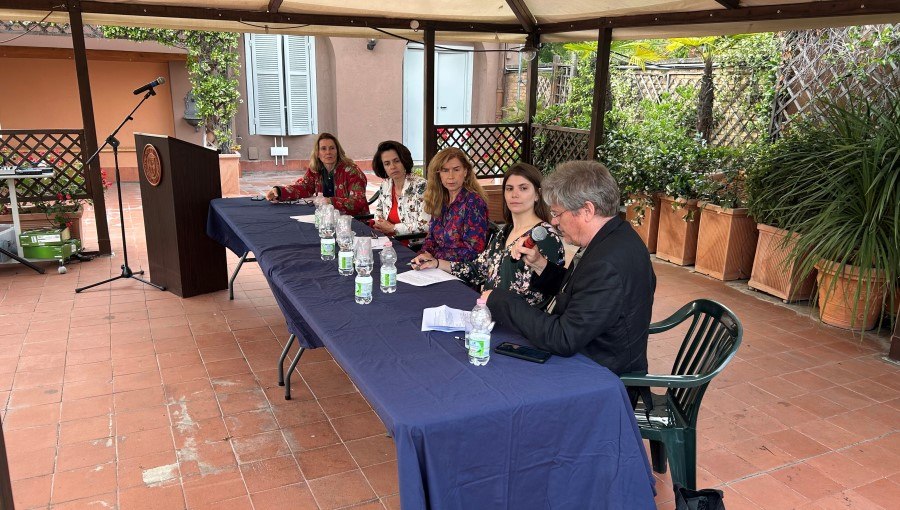Tibetan Mind-Body Practices with Professor Maria Kozhevnikov
On April 7, JCU’s Department of Psychological and Social Sciences welcomed Professor Maria Kozhevnikov from the National University of Singapore. In her lecture, Professor Kozhevnikov shared her findings from her field studies in remote monasteries across Tibet, Bhutan, and Nepal to discuss the underlying scientific mechanisms behind Tibetan mind-body techniques and their effect on the nervous system.

Misunderstandings of Meditation
Kozhevnikov began her lecture by addressing a popular misconception: in Western culture, meditation is typically associated with mindfulness practices centered around relaxation, happiness, and mental health. However, in traditional Buddhist practices — specifically Tibetan Vajrayana — meditation is not used as a wellness exercise. It is a form of intense training designed to push the mind’s capabilities beyond normal human limits, which will take years of intense practice. Kozhevnikov compared traditional meditation to Olympic-level training of the mind and modern mindfulness to physiotherapy: useful, but much less intense.
Scientific Mechanisms
Kozhevnikov continued her lecture by introducing the scientific mechanisms that reinforce advanced meditation techniques. She explained how meditation inherently gains control over the autonomic nervous system. This system is responsible for regulations such as heart rate, blood pressure, and digestion. Furthermore, she explained how different branches of Buddhism focus on different kinds of control.
Theravada practices, like Vipassana, promote relaxation and “tonic alertness,” which help calm the parasympathetic nervous system. On the other hand, Vajrayana practices, such as “deity self-visualization” and tummo (inner heat meditation), stimulate the sympathetic nervous system. They cause a state of arousal, leading to heightened perception, a longer attention span, and peak cognitive performance. This is similar to the “flow” state experienced by athletes and artists, and this discovery challenges the popular belief that meditation only causes relaxation.
Field Research
With two decades of fieldwork in remote monasteries in Tibet, Bhutan, and Nepal, Kozhevnikov shared groundbreaking findings from her scientific studies of Vajrayana practitioners. Her experiments showed that during deity visualization meditation, monks achieved dramatic improvements in visual memory and spatial skills, allowing them to exceed a human’s “normal” level of performance.
In her studies of tummo, Kozhevnikov found that practitioners demonstrated the abnormal ability to consciously raise their core body temperature, which was something that used to be considered biologically impossible. This increase was connected to specific patterns of brain activity associated with heightened focus attention. Kozhevnikov emphasized that mastering practices like this require exceptional “attentional capacity” and years of intensive training.
Modern Applications
Kozhevnikov concluded her lecture by discussing modern applications of these ancient practices. Training methods derived from tummo breathing and visualization techniques can be adapted to help:
- For police officers, tummo techniques can help to manage stress and maintain heightened awareness during emergencies.
- Astronauts can improve blood flow to the brain in low-gravity environments.
- Artists can access flow states more reliably for enhanced creativity.
However, Kozhevnikov warned that these complex traditions are disappearing fast with only a few remaining masters left. She is currently writing a book about her research, which aims to preserve these powerful mind-body techniques before they go extinct.
Maria Kozhevnikov is an Associate Professor in the Department of Psychology at the National University of Singapore. She also holds a research faculty position at Harvard Medical School and the Martinos Center for Biomedical Imaging. Maria received her Ph.D. from the Technion (Israel) in collaboration with UC Santa Barbara (California). Her research interests include neural correlates of mental imagery, exceptional human performance, human-computer interaction, and creativity.





